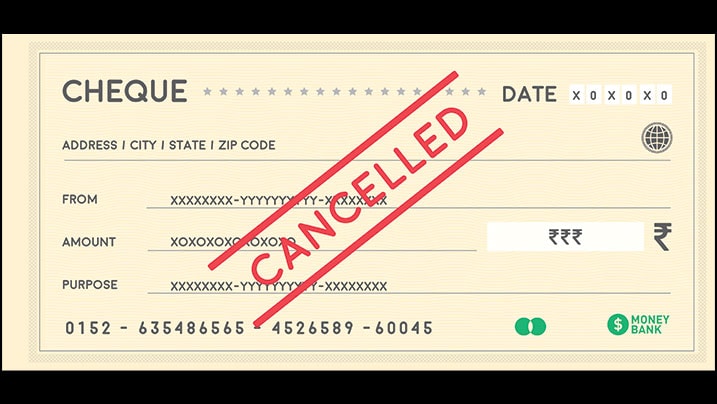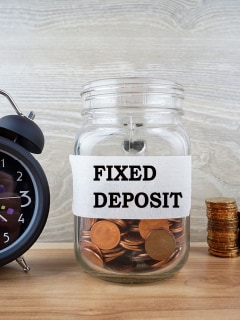CKYC Registry
-
Customer Service Contact us Service request Locate a branch
Find all the help you need
Scan the QR, get our app, and find help on your fingertips

Help CenterSupport topics, Contact us, FAQs and more
-
Login
Are you ready for an upgrade?
Login to the new experience with best features and services
-
Login
Are you ready for an upgrade?
Login to the new experience with best features and services
- Accounts
-
Deposits
IDFC FIRST Bank Deposits
View all Deposits -
Loans
IDFC FIRST Bank Loans
View all Loans - Wealth & Insure
-
Payments
IDFC FIRST Bank Payments
View all Payments -
Cards
IDFC FIRST Bank Cards
View all Cards - Blogs
- Corporate Account
-
Cash Management Services
IDFC FIRST Bank Cash Management Services
View all Cash Management Services - Supply Chain Finance
-
Corporate Lending
IDFC FIRST Bank Lending
View all -
Treasury
IDFC FIRST Bank Treasury
See more details - NBFC Financing
Support topics, Contact us, FAQs and more
- IDFC FIRST Bank Accounts
-
Savings Account
-
Corporate Salary
Account -
Senior Citizens
Savings Account -
First Power
Account -
Current Account
-
NRI Savings
Account -
TASC Institutional
Account -
Savings Account
Interest Calculator
- IDFC FIRST Bank Deposits
-
Fixed Deposit
-
Recurring Deposit
-
NRI Fixed Deposit
-
Safe Deposit Locker
-
FD Calculator
-
RD Calculator
- IDFC FIRST Bank Loans
-
Personal Loan
-
Consumer Durable
Loan -
Home Loan
-
Business Loan
-
Professional Loan
-
Education Loan
-
New Car Loan
-
Pre-owned Car Loan
-
Two Wheeler Loan
-
Pre-owned Two
Wheeler Loan -
Commercial Vehicle
Loan -
Gold Loan
-
Loan Against Property
-
Loan Against Securities
-
Easy Buy EMI card
-
Personal Loan
EMI Calculator -
Education Loan
EMI Calculator -
Home Loan
EMI Calculator -
EMI Calculator
-
Personal Loan Eligibility Calculator
- IDFC FIRST Bank Wealth & Insure
-
FIRST Select
-
FIRST Wealth
-
FIRST Private
-
Mutual Funds
-
Sovereign Gold Bond
-
Demat Account
-
Term Insurance
-
Life Insurance
-
Health Insurance
-
General Insurance
-
Bonds
-
Loan Against
Securities -
Portfolio Management
Service
- IDFC FIRST Bank Payments
-
FASTag
-
Credit Card
Bill Payments -
UPI
-
Funds Transfer
-
Forex Services
-
Pay Loan EMI
- IDFC FIRST Bank Cards
-
Ashva :
Metal Credit Card -
Mayura :
Metal Credit Card -
FIRST Millennia
Credit Card -
FIRST Classic
Credit Card -
FIRST Select
Credit Card -
FIRST Wealth
Credit Card -
FIRST WOW!
Credit Card -
Deals
-
Debit Cards
-
Co-branded Cards
-
Credit Card
EMI Calculator -
FIRST Corporate
Credit Card -
FIRST Purchase
Credit Card -
FIRST Business
Credit Card
- Premium Metal Credit Cards
-
AshvaLifestyle1% Forex₹2,999
-
MayuraLifestyleZero Forex₹5,999
-
FIRST PrivateInvite Only
- Best for travellers
-
MayuraZero ForexMetal₹5,999
-
Ashva1% ForexMetal₹2,999
-
FIRST WOW!Zero ForexTravelLifetime Free
-
FIRST SWYPTravel OffersEMI₹499
-
FIRST Select1.99% ForexLifestyleLifetime Free
-
FIRST Wealth1.5% ForexLifestyleLifetime Free
-
Club VistaraTravelLifestyle₹4,999
-
IndiGo IDFC FIRST Dual Credit CardTravelLifestyle₹4,999
- Max benefits, Free for life
-
FIRST Classic10X RewardsShoppingNever Expiring Rewards
-
FIRST Millennia10X RewardsShoppingNever Expiring Rewards
-
FIRST Select10X RewardsLifestyle1.99% Forex
-
FIRST Wealth10X RewardsLifestyle1.5% Forex
-
FIRST WOW!RewardsTravelZero Forex
-
LIC ClassicRewardsInsuranceShopping
-
LIC SelectRewardsInsuranceShopping
- Reward Multipliers
-
AshvaLifestyleMetal₹2,999
-
MayuraLifestyleZero Forex₹5,999
-
FIRST ClassicNever Expiring RewardsShoppingLifetime Free
-
FIRST MillenniaNever Expiring RewardsShoppingLifetime Free
-
FIRST SelectNever Expiring RewardsLifestyleLifetime Free
-
FIRST WealthNever Expiring RewardsLifestyleLifetime Free
- Rewards & Credit on UPI
-
FIRST Power+FuelUPI₹499
-
FIRST PowerFuelUPI₹199
-
FIRST EA₹NVirtual1% Cashback₹499
-
FIRST DigitalVirtualUPI₹199
-
IndiGo IDFC FIRST Dual Credit CardUPITravelDual cards
- Fuel and Savings
-
FIRST PowerRewardsUPI₹199
-
FIRST Power+RewardsUPI₹499
-
LIC ClassicRewardsInsuranceShopping
-
LIC SelectRewardsInsuranceShopping
- Express and Flaunt
-
AshvaMetal1% Forex₹2,999
-
MayuraMetalZero Forex₹5,999
-
FIRST SWYPEMIOfferMAX₹499
-
FIRST MillenniaRewardsShoppingLifetime Free
- FD Backed rewarding Credit Cards for all
-
FIRST EA₹NVirtualCashback₹499
-
FIRST WOW!Zero ForexTravelLifetime Free
-
CreditPro Balance TransferTransfer & SaveReduce InterestPay Smartly
- IDFC FIRST Bank NRI Forex Solutions
-
Send money to India-Wire transfer
-
Send money to India-Digitally
-
Send money abroad
-
Max Returns FD (INR)
- IDFC FIRST Bank MSME Accounts
-
Platinum Current
Account -
Gold
Current Account -
Silver Plus
Current Account -
Merchant Multiplier
Account -
Agri Multiplier
Account -
TASC Institutional
Account -
Dynamic Current
Account -
World business
Account -
First Startup
Current Account
- IDFC FIRST Bank Business Loans
-
Business Loan
-
Professional Loan
-
Loan Against Property
-
Business Loan for Women
-
Working Capital Loan
-
Construction Equipment Loan
-
Machinery Loan
-
Healthcare Equipment Loan
- IDFC FIRST Bank Business Solutions
-
Payment Solutions
-
Tax Payments
-
Doorstep Banking
-
Point of Sale (POS)
-
Escrow Accounts
-
NACH
-
Payment Gateway
-
UPI
-
Virtual Accounts
-
As per amendment in the Income Tax Rules, PAN or Aadhaar are to be mandatorily quoted for cash deposit or withdrawal aggregating to Rupees twenty lakhs or more in a FY. Please update your PAN or Aadhaar. Kindly reach out to the Bank’s contact center on 1800 10 888 or visit the nearest IDFC FIRST Bank branch for further queries.
-
-
Most Searched
Sorry!
We couldn’t find ‘’ in our website
Here is what you can do :
- Try checking the spelling and search
- Search from below suggestions instead
- Widen your search & try a more generic keyword
Suggested
Get a Credit Card
Enjoy Zero Charges on All Commonly Used Savings Account Services
Open Account Now
Cheques are one of India's most widely used banking services. They are easy to understand, so they can be used by people living in urban as well as rural areas. Cheques also have multiple uses, acting as proof of ownership in addition to a means of transaction. Additionally, a cancelled cheque, a type of cheque, can be used to open a bank account and apply for a loan.
What is a cancelled cheque?
A cheque with two parallel strike lines is known as a cancelled cheque. The phrase "CANCELLED" is scrawled across the cheque between the two parallel strike lines. It is written like this to ensure no one can misuse the cheque. Although cancelled cheques cannot be used to withdraw funds, they are vulnerable to cyber theft or misuse because they contain the following information:
- MICR code
- Bank account number
- IFSC (International Financial Services Code)
- Account holder's name
- Bank name with the branch
- Cheque number
READ MORE
What does a cancelled cheque denote?
A cancelled cheque cannot be used for withdrawing or sending money. It contains your banking information which some banks and other organisations may use to verify your details and their correctness. The cancelled cheque contains your bank account number, the IFSC code of your home branch, and the MICR code which are used by lenders, investment brokers, and other organisations as proof of your banking details. So, it’s not wrong to say that a cancelled also acts your banking bonafide certificate.
A cancelled cheque is also used for KYC verification, insurance claims, EPF withdrawals, and loan disbursals. Hence, it forms a crucial document for availing of several financial services and more. However, always ensure to use correct measures for cancelling a cheque since they can be used for fraudulent purposes if not cancelled as per the convention.
How to write a cancelled cheque?
It is easy to write a cancelled cheque. It does not require extensive information, so anyone with a pen can write one. Keep these pointers in mind if you want to write a cancelled cheque:
- Take a new cheque.
- Do not write any information on the cheque, such as the Payee's name, the amount, or signature.
- Across the check, draw two parallel lines.
- Between the two parallel lines, write "CANCELLED" in capital letters.
- Ensure that the parallel lines do not obscure any vital information, like the account number, IFSC code, MICR code, account holder's name, bank's name, or location.
As a result, it is recommended that the cheque be crossed out properly to avoid any mismanagement that could cause financial losses.
When do you need a cancelled cheque?
A cancelled cheque is more valuable than you might think. Here are some of its most common uses:
- You must present a cancelled check when investing in stocks, mutual funds, or other financial assets. You cannot start investing without one.
- If you want to make a withdrawal from your EPF account, you will need to provide a cancelled cheque.
- ECS stands for Electronic Clearance Service. It allows you to move money from one account to another. You will need to send a cancelled cheque to your bank to activate this service on your account.
- Before settling your EMI payments against an obtained loan or credit amount, your bank or NBFC will need a cancelled cheque.
- If you wish to open a Demat account, you must submit a cancelled cheque along with additional KYC papers such as proof of identification, proof of address, and so on.
- When purchasing insurance, you must present a cancelled cheque as verification.
Risk Associated with a cancelled cheque
People worry about misuse and fraudulent withdrawal using the cancelled cheque. However, no such transaction can occur since they are legally cancelled, and you must not worry about it. However, ensure to cancel your cheque as per the norms.
- Always use a blue or black ink pen to cancel your cheque as banks may reject your cheque in other cases.
- No signature is required on the cancelled cheque. It is only used to verify your banking details and similar purposes. So, you don’t need to put any signature.
- Make sure to write ‘Cancelled’ after marking parallel lines on the cheque. In the moment of hassles, one may forget to mark the word. Banks won’t treat it as cancelled cheque and may reject it.
Nobody can withdraw money using a cancelled cheque, but people can still use it for fraudulent acts. To be safe, do not sign a cancelled cheque and always hand it over to an authoritative figure. A cancelled cheque still has information like your bank account number, MICR code, IFSC code, bank name, account holder's name, and so on.
Always ensure your signature is not affixed to a cancelled cheque; otherwise, fraudsters may be able to duplicate it. If a signature on the cheque leaf is mandated, get a statement or affirmation to support the same.
Frequently Asked Questions
What is the need of cancelling a cheque?
A cancelled cheque consists of your banking details such as your account name and number, bank name and branch, IFCS code, and the MICR code. It helps banks and other organisations such as lenders, insurers, and investment brokers to verify your banking details. When availing their services, you may need a cancelled cheque for KYC verification and other similar purposes.
Do I require to sign a cancelled cheque?
No, a cancelled cheque is not used for any financial transaction, so you don’t need to authorise it through your signature. You simply need to draw two parallel lines and write ‘cancelled’ between them.
Can I use a cancelled cheque later to withdraw money?
A cheque once marked cancelled cannot be used for transactions in the future. To withdraw money, you will need a fresh cheque leaf and mention all the required details and mark your signature.
Are there any risks involved in sharing a cancelled cheque?
Since a cheque is cancelled legally by its writer, it cannot be used for withdrawing money. Hence, the cheque holders must not worry about any risks. However, cancelled cheques still contain your banking information so you should be vigilant with whomever you share your cancelled cheque.
Can I use a red ink or green ink pen to cancel my cheque?
Conventionally, black or blue pens are used to cancel a cheque. Marking with red or green ink may result in rejection. It is advisable to use a blue or black pen and follow the correct method to cancel your cheque.
Disclaimer
The contents of this article/infographic/picture/video are meant solely for information purposes. The contents are generic in nature and for informational purposes only. It is not a substitute for specific advice in your own circumstances. The information is subject to updation, completion, revision, verification and amendment and the same may change materially. The information is not intended for distribution or use by any person in any jurisdiction where such distribution or use would be contrary to law or regulation or would subject IDFC FIRST Bank or its affiliates to any licensing or registration requirements. IDFC FIRST Bank shall not be responsible for any direct/indirect loss or liability incurred by the reader for taking any financial decisions based on the contents and information mentioned. Please consult your financial advisor before making any financial decision.
The features, benefits and offers mentioned in the article are applicable as on the day of publication of this blog and is subject to change without notice. The contents herein are also subject to other product specific terms and conditions and any third party terms and conditions, as applicable. Please refer our website www.idfcfirst.bank.in for latest updates.























